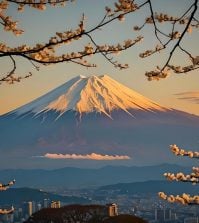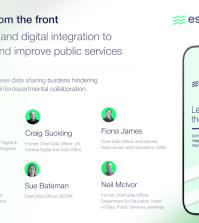Satellite night signal project could help India’s government spread electricity

A tool monitoring the use of light in Indian cities and villages could help the government in its effort to bring electricity to all the country’s villages by 2018, a World Bank official has said.
Working with space agencies around the world with access to 1,300 satellites in orbit, the World Bank has been monitoring four billion light signals on earth each day, and visualising night light data spanning the last 20 years.
Last year, the bank refined its approach to collect data specific to countries with low electrification rates, such as India, in order to determine and identify who has electricity and who doesn’t.
Now, this data, which covers more than 600,000 Indian villages, is available on India.nightlights.io – an online open source platform.
This data can help the government “closely monitor progress on the ground” as well as “plan and optimise policies and interventions,” Kwawu Mensan Gaba, global energy lead at the World Bank, wrote in a blog post.
And Onno Ruhl, the World Bank’s country director for India, said: “This visualization will be a powerful tool to supplement the Indian government’s efforts to ensure rapid electrification.”
Tejpreet Chopra, president and CEO of Bharat Light and Power, a private company which builds, owns, and operates renewable energy power plants, described Nightlights.io as a “path-breaking platform that will transform the way the world solves the global challenge of energy availability.”
“The tool will help us… provide energy solutions… to people who need it most,” he added.
In its 2016-17 federal budget released last month, India’s government pledged to allocate more funds to bring electricity to all of the country’s villages by May 2018.
New Delhi’s target is to provide electrification to around 200 villages per week.
The goal, however, is limited to bringing electricity to all villages, and not to provide power to all households.
There is a distinction between the two as India’s 2011 census highlighted that even in villages which had access to electricity, only 55% of homes used it as the primary source of lighting.
Of the estimated 300 million Indians – nearly as many people as the entire population of the United States – who do not have access to electricity, around two-thirds of them live in rural areas. In fact, government data shows that over 12,000 villages in the South Asian nation are currently not connected to the power grid.
NightLights.io is an open source platform comprised of a pipeline to process massive amounts of data; an application programming interface (API) that enables technical partners to query light output; and a dashboard map to allow users to explore light output trends.
Designed to be freely explored by users around the world, the platform provides the ability to get high-level overviews, compare villages, plot trends, and share data.
The data from this platform can be accessed from the India Lights API.
For more information, email [email protected].
Government officials and other interested parties are invited to provide feedback. This can be submitted via email to Kiwako Sakamoto.
For up to date government news and international best practice follow us on Twitter @globegov
See also:
Australia’s chief scientist calls for increased investment in renewable energy
World Bank appoints first female country director in Philippines
India’s banking scheme draws in 200m new customers





















